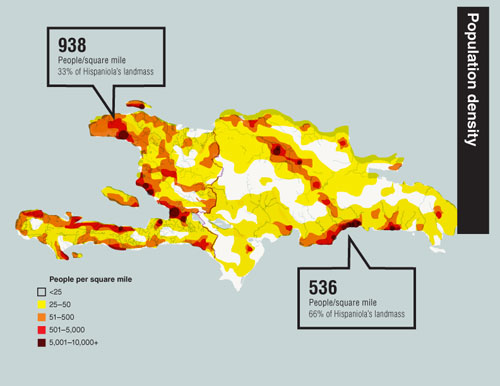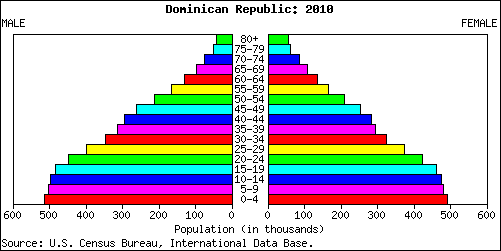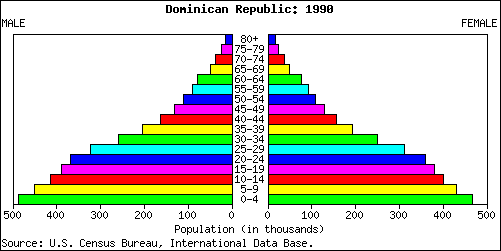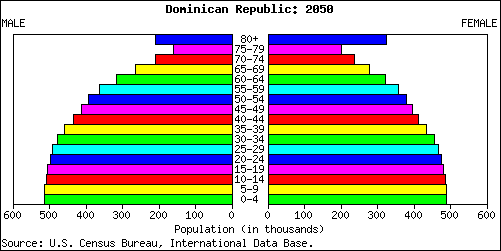Energy Use:
-in total:13461000000 kWh
-per capita: 1,392 kWh
-The graph below shows energy use per capita from 1990 to 2012. Between 1990 and 2000 the energy use was much lower than the energy use between 2001 and 2012.

Energy Distribution:
-Residential: 44%
-Commercial:10%
-Industrial: 30%
-Public: 16%
Where does the energy come from?
-82% from fossil fuels
-imported gas and oil
-14% from hydroelectric
-2% from wind
-2% from solar/other
Hydroelectric:
-The Dominican Republic has been trying to rely less on important oils and gas to move towards hydroelectric power. With being surrounded by water, hydroelectric power is easily accessible as well as efficient.
-there are currently 20 hydroelectric plants
-the plan is to boost hydroelectric power to 25% by 2020
-the graph below shows hydroelectric power from 1990 to 2012. As shown hydroelectric power has been becoming increasingly popular over the period of time

Wind:
-only 2% of the power is wind
-the plan is to increase this to about 7% by 2020
-the Dominican Republic is currently working on a project that will spend around $100 million on installing wind farms. There will be 19 wind towers built and overall they will contribute 33 megawatts to the national electricity. That 33 megawatts will save 200,000 barrels of oil a year.
-the Inter-American Development Bank loaned $78.3 million for two new wind projects

Solar/other:
-about 1.5% is used on solar power
-with the Dominican Republic being located so close to the equator solar power would be very efficient. The disadvantage to solar power is the cost. With many people living below poverty line, people cannot afford to install solar panels.
-steam and gas turbines are sometimes used
-expensive and not efficient
Energy Policy:
-National Energy Plan
-because of high demand of fossil fuels, high oil prices and the reliance upon other countries
-Dominican Republic started plan to become more self-sufficient and start developing and using renewable energy sources versus using fossil fuels. This plan was started in 2004 and has goals to meet by 2020. These goals for example are to increase hydroelectric power to 25% and wind to 7% by 2020.
-Indicative Plan of Electricity Generation
-to increase the use of renewable energy
-the National Energy Commission is promoting the use of renewable energy by creating tax incentives for those who use renewable energy
-in the graph shown below it is the fossil fuel consumption from 2000 to 2012. As shown the fossil fuel consumption has decreased, proving the energy policies to be successful.

Sustainable Sources of Energy:
-with trying to convert to self-sufficiency, the Dominican Republic's main sustainable source of energy is hydroelectric power. With being located on the water it is extremely sustainable to build turbines for tidal power as well as dams in the rivers.
Recommendations:
-increase hydroelectric power
-increase solar power
-increase wind power
-the Dominican Republic should increase the use of hydropower by building turbines to capture the energy of the waves. They can do this using tidal power. In addition to using tidal power, the Dominican Republic should build solar panels. They should ask for a loan to build the panels, because given that they are located so close to the equator this will be a successful project. Lastly they should continue to try to increase wind power by building wind turbines off the coast. By doing this it will not take up valuable farming space and will also be able to capture the sea wind.






